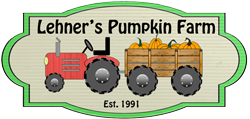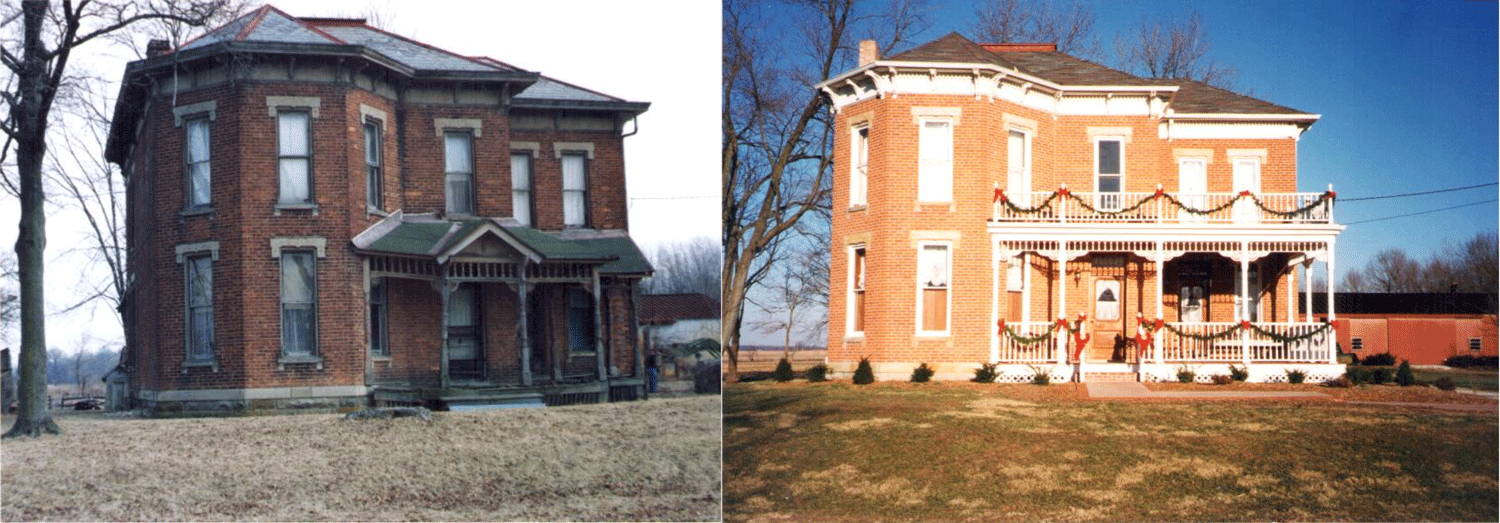
“-Like the one stray fragment of a wreck, which, thrown with the vessel’s name ashore, tells who they were that live no more.”
Preface: The above quotation (which was taken from The History of Delaware County, Ohio of 1880) is perfect, when describing history!
As we have researched and learned more about our farm, it makes us realize that our knowledge is just that… a tiny fragment from a huge history. It’s a glimpse of what life was like in centuries past. It can give us names, and some descriptions, but it doesn’t really let us fully know the people who lived before us. We are not historians, nor do we claim to have great knowledge of the native groups or pioneers who lived in this land prior to us, we simply want to recognize and honor them as being part of our farm’s history. We have been so excited to find each piece of history to share, and hope that you will find it interesting as well.
Our farm has history~ a history that began during the ICE AGE. At that time, glaciers covered much of northern Ohio as well as the land at our farm. They moved very slowly, flattening most of the ground in this area, leaving behind some hills and rocks as they melted. In the field north of our brick house (between the house and Penry Rd), glaciers deposited a huge bolder made primarily of granite (which is NOT native to this area). The bolder is visible from State Route 203 when crops aren’t surrounding it. Visitors to the farm can often get an up-close look at our “Glacier Rock” as they enjoy one of our fall hayrides.
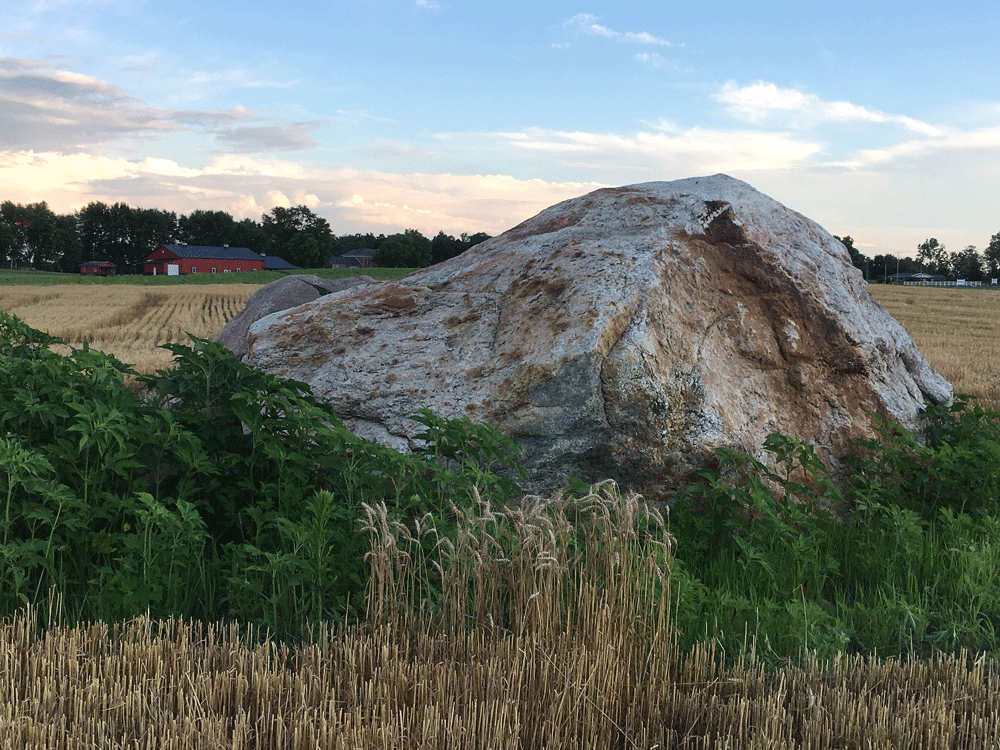
Glacier Rock
In the years following the Ice Age, our farm had many residents. Numerous groups of native people called our land home, starting way back with the prehistoric Native people. There were many different groups and nations over thousands of years. The mound builders were among some of the earliest, followed by the people classified collectively today as Woodland Indians (due to their surroundings.) They would have used the resources they had to build their homes (wigwams and longhouses), make their clothes (leather and fur), and to eat. These people were hunters and gatherers, farmers, fishers and trappers. It was most likely that some of these ancient people were the first to grow pumpkins, corn (maize) and beans on our farm! How cool is that? Some grew these crops, known as the “three sisters” together. The corn worked as a trellis for the bean vines. The beans provided nitrogen to the soil for the corn and the pumpkins or squash smothered out the weeds. It is also said that they buried a fish when planting these seeds to work as natural fertilizer. These native people were very intelligent and figured out this symbiotic relationship without the help of books or even “Google”!
Pumpkins/squash were a staple for most native people in this area and was used in a variety of ways. They roasted, baked, parched, boiled and dried the insides. They ate pumpkin seeds and also used them to make medicines. Dried pumpkin could be stored and ground into flour. They even used the blossoms in some of their foods. Some of the most recent Native American groups to live in this area were the Wyandott, Delaware (Lenni Lenape), Mingo, and Shawnee, through the early 1800’s. Evidence of these great nations have surfaced in our fields over the years. We have found arrowheads, partial ceremonial pieces and other Native American artifacts.
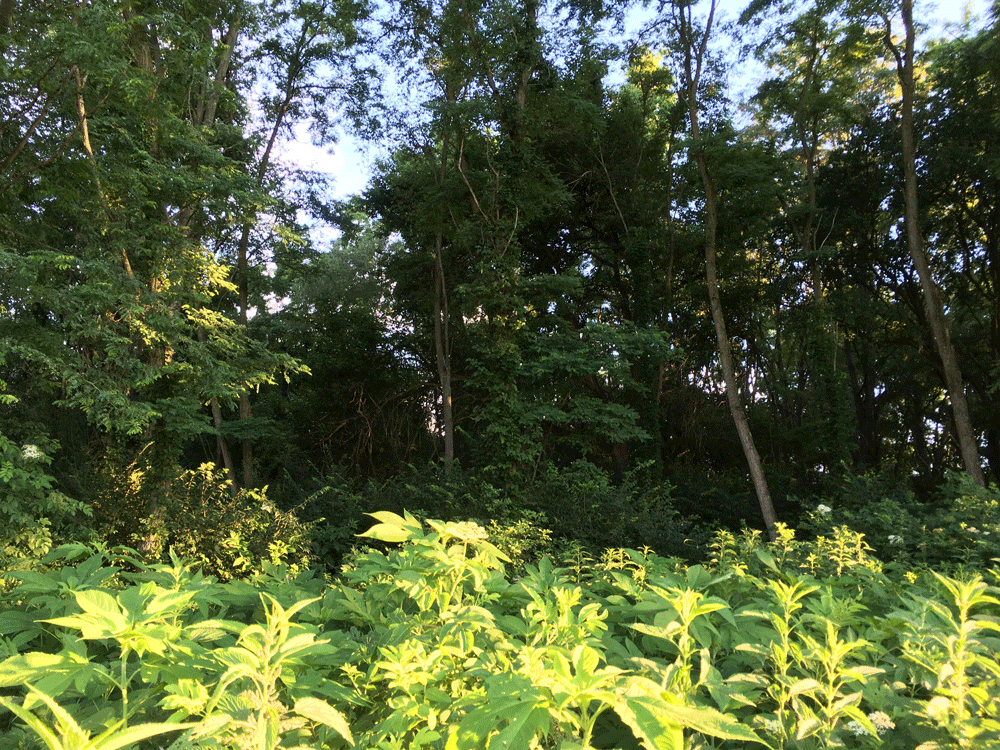
Forest
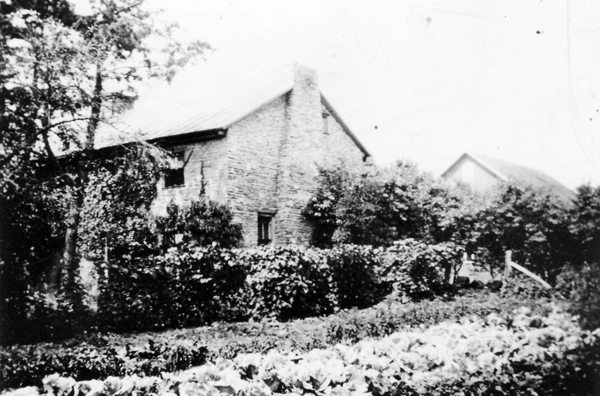
In 1800, a man, named David Pugh, left his home in Radnorshire, Wales to come to the United States. He was hired by Samuel Jones in Pennsylvania to come to this area to inspect 4,000 acres of land he (Samuel Jones) had purchased with Revolutionary War land grants. David reported to Samuel that the land was covered with forest and a bit swampy but very nice land. David and Samuel came to an agreement and David became the owner of the 4,000 acres. David went back to Wales and advertised his land for sale in the U.S. which he sold in 100 acre tracts.
This started a wave of Welsh immigration to Radnor Township. (Read more about this history here or visit the Radnor Historic Society on the corner of Radnor Rd and St. Rt. 203). In 1826 (or slightly before) a stone home, currently owned by our family on Dildine Rd, was built. This Welsh style stone house is one of the oldest homes still standing in the area. At that time, many Native American groups still visited/lived in the area. Also, interesting to think about, was that much of the land was covered by forest. Many animals, which have since been eradicated from the area, such as bears, still lived here! One such story was documented in the Historical Collections of Ohio volume I published in 1890.
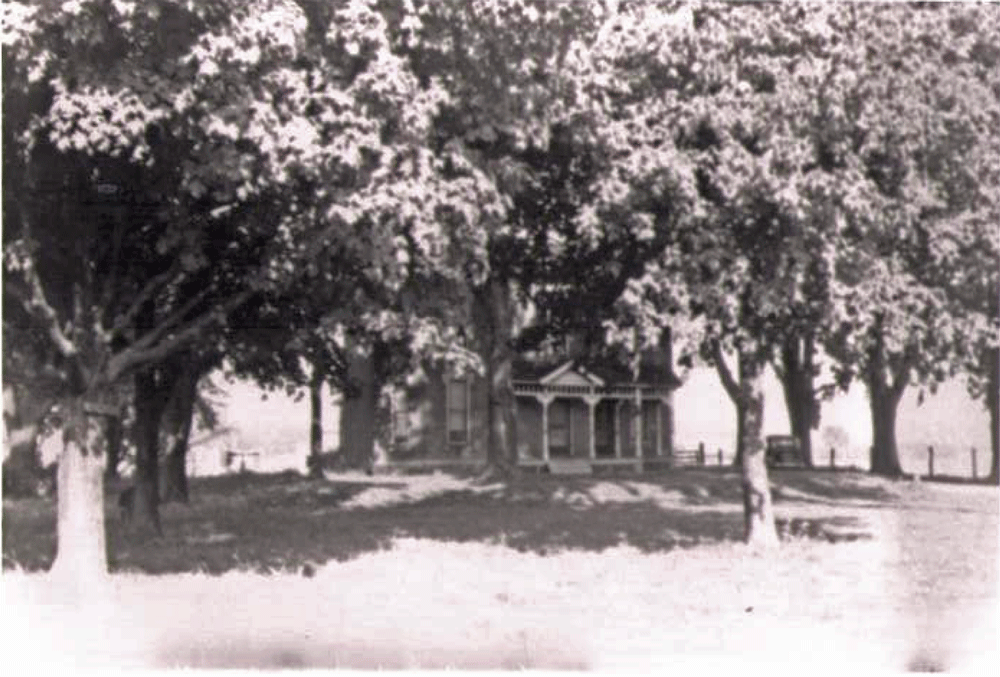
The Gallant House Early 1900’s
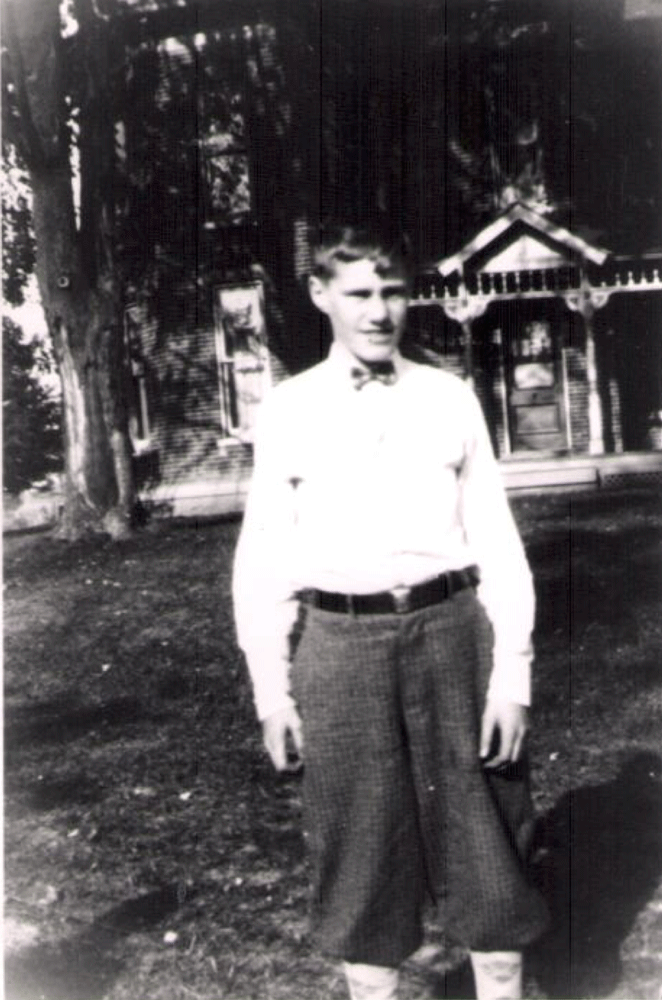
Ellis Gallant in front of the Gallant House.
The history of our Victorian, Italianate style brick farm house (here at the farm) really starts on Feb. 8, 1877 when the owner of the land, John W Humphreys and his bride, Hattie Cox, were married. Construction of the house started later that year and was completed in 1878. Sadly, Hattie died on October 17, 1878 and the home was left without a family. John had little use for such a large home.
The house and land was purchased in 1880 by a neighbor, Charles Gallant. Charles was the great grandson of Radnor township pioneers James and Mary Polly Clay Gallant for whom Gallant Road is named. Charles and his wife Rosella Thomas were married April 12, 1883 and the house finally had a family. Their son, Ellis F. Gallant, was born there on June 12, 1884. They only lived in the house for a short time before moving into Delaware.
They rented the farm house to several tenants after that. According to one story, Charles and his wife noticed that one of their tenants seemed quite popular. It wasn’t until they learned the renter was a bootlegger that they understood why he was so popular! That tenant was evicted shortly thereafter.
After several tenants, the house stood vacant and unloved for 28 years (except for the wild animals who made it their residence). One of Charles’ grandsons, Ellis W. Gallant, inherited the farm. The farm was a place he liked to escape to and he visited it regularly. He raised cattle on the farm for a time, and later he and his wife, Janet, grew huge gardens and beautiful flowers there.
In 1991, Ellis sold the house and property to Steve and Shelly Lehner, whose family farm bordered the property. They completely remodeled the house, added its first indoor plumbing, new electric wiring, took out the plaster and added drywall, as well as a new porch. They unfortunately could not save the original summer kitchen on the back as it was infested with termites. Shelly always hoped to add the addition back onto the home.
Ellis and Janet continued to raise a garden in their plot of land across the road for many years and visit the Lehner’s regularly. The brick home, that had such a sad start, was once again beautiful and had a family!
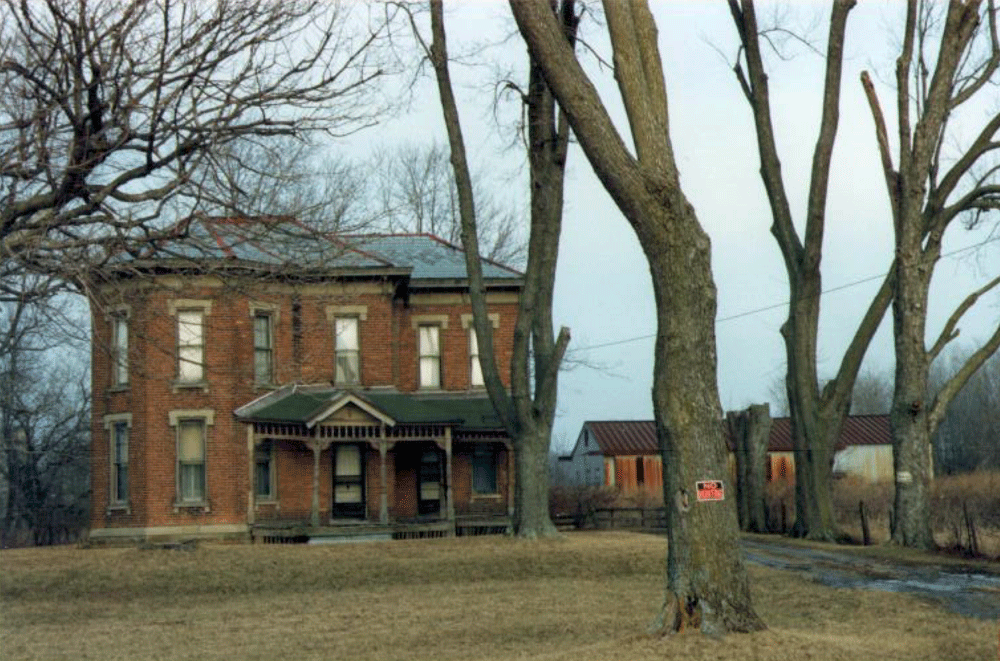

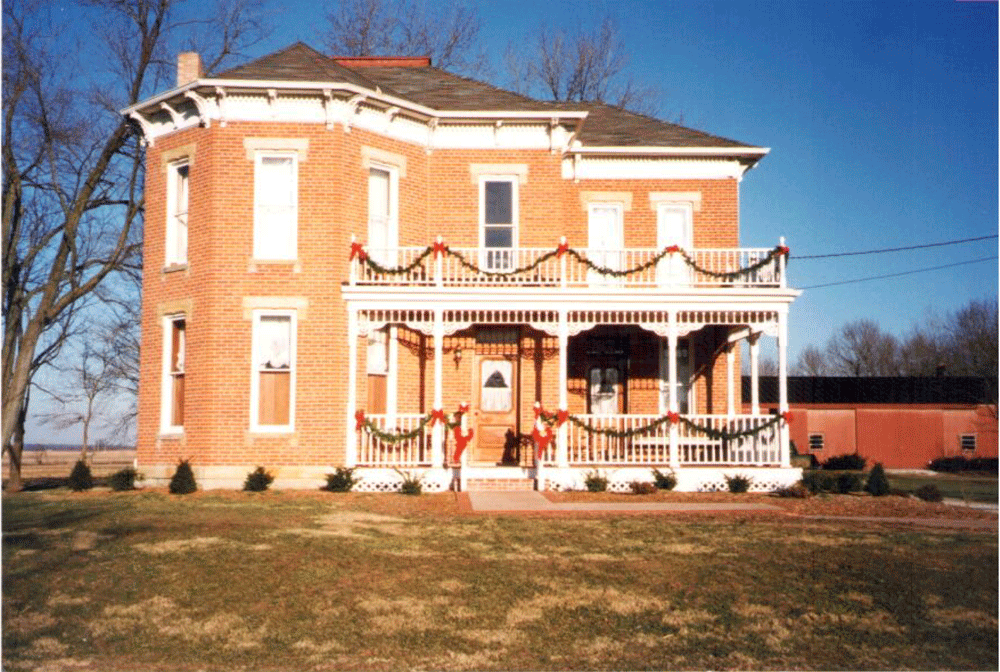
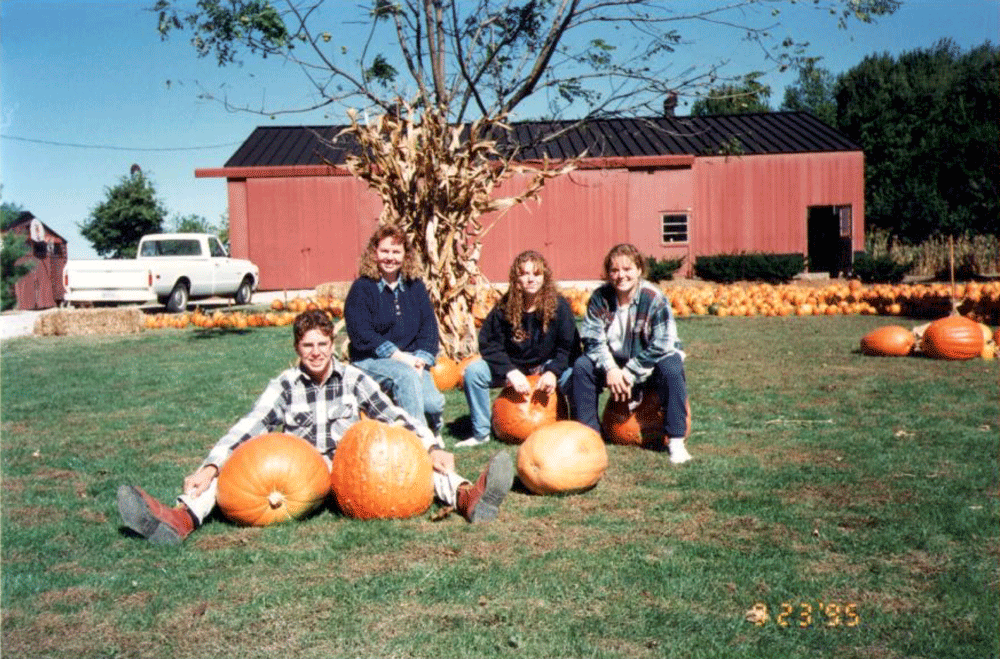
Shawn, Shelly, Sheryl and Shannon with 1995 harvest
In 1992, Steve and Shelly’s 14 year old son, Shawn Lehner, grew his first crop of pumpkins as a 4-H project. That year he harvested 2 wagon loads of pumpkins, which he sat out by the road. He sold all of them and the “light bulb” came on that maybe this could be a good business.
The following year he grew more. He grew pumpkins to help pay for college expenses and has continued to grow and wholesale pumpkins for 26 years. He started with a couple acres of pumpkins and now grows almost 50 acres. Back in those early years, families could come to the farm to pick their pumpkins as well.
Over the years other activities have been added such as hayrides, jump houses, etc. until it has become more of the “agri-tainment” destination guests can expect to find at the farm today. Despite the larger crowds, we do our best to maintain the authentic farm experience and low prices that our early guests remember.
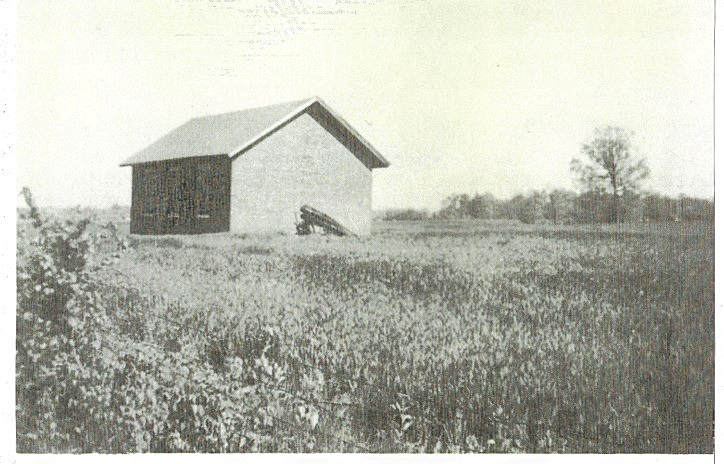
Dildine Road School House
In 2008, Shelly finally got her wish for an addition on the house. They carefully planned the addition and worked with an architect to maintain the style and integrity of the original structure. The outside building material was also a concern when matching the front to the back. They knew it would be nearly impossible to match the original brick. At the time, an old, one room schoolhouse still stood across the road on Dildine Rd. The schoolhouse was falling down and beyond repair. One end of it was missing as it had been used to store farm machinery for several years.
The Lehners were granted permission to take the schoolhouse down, brick by brick, to use for their addition. This was a painstaking task as most of the bricks were covered in mortar and had to be individually cleaned. The extra effort was worth it, as the end product turned out as an almost perfect match to the original bricks on the house. The bricks of the deteriorating schoolhouse are now beautifully preserved in the back part of their home.
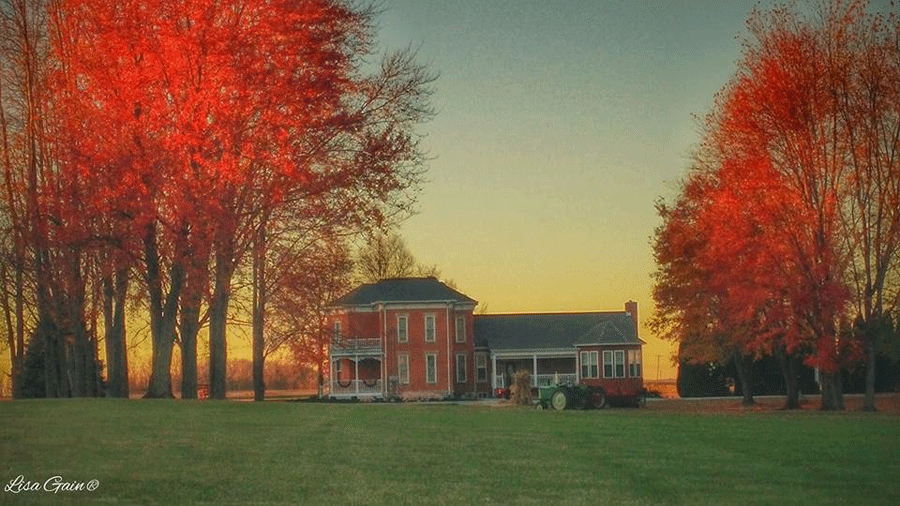
Our farm has seen numerous changes over the years! This year, we decided to honor the rich heritage of our family farm by adding new activities that will hopefully depict life during earlier times, when the land belonged to the Native Americans who first lived here as well as what it was like for the pioneers during the early homesteading days. We hope you’ll find this history and our additional activities as fascinating as we do!
The HISTORY OF OUR FARM was researched and written by Christy Lehner with the help of the following resources…
History Delaware County, OH 1880
Delaware County, Ohio History and Biography 1908
Radnor Historic Museum
Janet Gallant, Delaware, OH
Shelly Lehner, Radnor, OH
